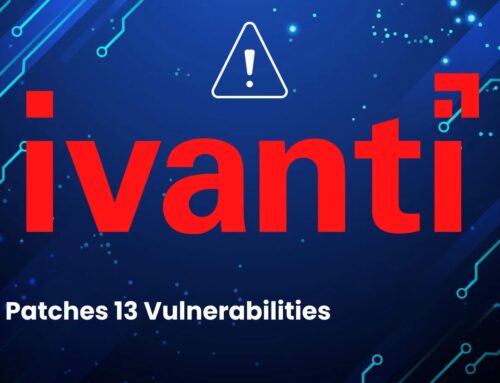
Akira Ransomware Uses Windows Drivers to Bypass AV/EDR in SonicWall Attacks
Akira Ransomware’s Evolving Tactics: Exploiting Windows Drivers for AV/EDR Evasion
The cybersecurity landscape continually presents new challenges, and the recent discovery of Akira ransomware affiliates leveraging legitimate Windows drivers to bypass antivirus (AV) and endpoint detection and response (EDR) systems marks a significant escalation in threat actor sophistication. This insidious technique, observed during SonicWall VPN attack campaigns from late July through early August 2025, underscores the critical need for organizations to reassess their defensive postures and adapt to these evolving evasion tactics.
The Devious Strategy: Legitimate Drivers as Cover
Akira ransomware, known for its double-extortion tactics, has upped its game by integrating highly evasive methods. Instead of developing custom, easily detectable malicious kernel modules, the threat actors are exploiting a more subtle vulnerability: the trust placed in legitimate Windows drivers. These drivers, signed by trusted vendors, are essential components of the operating system, making their malicious repurposing particularly effective at avoiding detection by traditional security solutions.
By loading these legitimate, yet weaponized, drivers, Akira operators can gain kernel-level access. This privileged access allows them to disable security agents, tamper with system processes, and ultimately execute their ransomware payloads without triggering alerts from AV or EDR solutions that typically monitor for suspicious user-mode activities or unrecognized kernel modules. This method is a stark reminder that even trusted components can be weaponized against an organization.
Attack Vector: SonicWall VPN Exploitation
The primary vector for these advanced Akira campaigns has been identified as compromised SonicWall VPN devices. While the specific CVE associated with these attacks was not detailed in the source, it’s crucial to understand that vulnerabilities in perimeter network devices like VPNs are highly attractive targets for threat actors seeking an initial foothold. Once inside, the driver-based evasion technique facilitates persistent access and enables the ransomware deployment.
Organizations utilizing SonicWall VPN solutions, or any network perimeter device, must maintain rigorous patching schedules and continuous monitoring to mitigate such threats. The synergy between an initial access vulnerability and sophisticated evasion techniques like the driver-based bypass creates a formidable challenge for defenders.
Why This Matters: Bypassing Traditional Defenses
The use of legitimate Windows drivers for malicious purposes represents a significant leap in anti-forensic and evasion capabilities. Traditional AV solutions primarily rely on signature-based detection and heuristics for known malware. EDR systems, while more advanced, often focus on behavioral anomalies at the user-mode level or the detection of unsigned or suspicious kernel modules.
When a legitimate, signed driver is co-opted, it flies under the radar of many existing security controls. This allows Akira ransomware to:
- Disable Security Products: Gain the ability to terminate or interfere with AV and EDR processes.
- Maintain Persistence: Establish a foothold that is difficult to detect and remove.
- Execute Unhindered: Encrypt systems and exfiltrate data without triggering immediate alarms.
Remediation Actions and Proactive Defense
Addressing the threat posed by Akira ransomware’s new evasion tactics requires a multi-layered and proactive approach:
- Patch Management: Immediately apply all available security patches and updates for SonicWall VPN devices and all other network infrastructure. Regularly review and implement patches for all operating systems and applications.
- Principle of Least Privilege: Enforce strict least privilege policies for all users and services. Reduce the attack surface by limiting unnecessary permissions.
- Granular EDR Configuration: Review and enhance EDR configurations to include more granular monitoring of driver loading, kernel-level activities, and inter-process communication. Consider EDR solutions with advanced behavioral analysis capabilities that can detect anomalies even from trusted processes.
- Application Whitelisting/Control: Implement application whitelisting solutions that prevent unauthorized executables and drivers from running on endpoints. While challenging for drivers, this can restrict unauthorized script execution and program installations.
- Network Segmentation: Isolate critical systems and sensitive data through robust network segmentation. This limits lateral movement even if an initial compromise occurs.
- Regular Backups: Maintain immutable, offline backups of all critical data. Test your backup and recovery procedures regularly to ensure rapid restoration in case of an attack.
- Threat Hunting: Proactively hunt for indicators of compromise (IOCs) related to Akira ransomware and driver manipulation. Look for unusual driver loads, attempts to disable security products, or unexpected process terminations.
- User Education: Train employees on phishing and social engineering tactics, as these are often initial entry points for ransomware attacks.
Relevant Tools for Detection and Mitigation
While no single tool guarantees complete protection, a combination of the following can significantly enhance defenses against sophisticated threats like Akira’s driver-based evasion:
| Tool Name | Purpose | Link |
|---|---|---|
| Sysinternals Process Monitor | Real-time file system, Registry, and process/thread activity monitoring. Can help detect unusual driver loads or process manipulations. | https://learn.microsoft.com/en-us/sysinternals/downloads/procmon |
| Microsoft Defender for Endpoint (MDE) | Advanced EDR capabilities for detecting sophisticated threats, including kernel-level activities and attempts to tamper with security features. | https://www.microsoft.com/en-us/security/business/threat-protection/microsoft-defender-for-endpoint |
| CrowdStrike Falcon Insight | Cloud-native EDR solution offering extensive behavioral analytics and threat hunting capabilities. | https://www.crowdstrike.com/products/endpoint-security/falcon-insight-edr/ |
| Varonis Data Security Platform | Focuses on data access governance and insider threat detection, crucial for protecting data exfiltration aspects of ransomware. | https://www.varonis.com/products/data-security-platform |
Conclusion
The evolution of Akira ransomware to leverage legitimate Windows drivers for AV/EDR bypass in SonicWall attacks is a stark reminder that cyber adversaries are constantly innovating. This technique highlights the limitations of traditional security models and underscores the imperative for organizations to adopt a more robust, layered security posture. By focusing on stringent patching, advanced EDR capabilities, network segmentation, and proactive threat hunting, organizations can significantly enhance their resilience against such sophisticated and evasive threats. Staying informed and adaptive is key to navigating the complex and ever-changing landscape of cyber threats.





